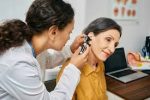
Eczema in Asian Skin: What You Need to Know
In contrast to the red appearance that is typically observed on light skin, eczema on Asian skin frequently manifests as itchy, inflamed, and scaly patches that are gray, purple, or darker brown.
Asian skin can exhibit eczema symptoms in a different way than light skin. Because of these differences, it can be difficult to diagnose eczema on skin of color because some symptoms may be less obvious to medical professionals who aren’t used to these differences.
Continue reading to learn more about Asian skin eczema, including its associated risk factors and treatment options.
What does eczema look like on Asian skin?
Asian skin may exhibit gray, purple, or dark brown eczema instead of the typical redness seen in medical literature. Due to the fact that the discoloration may not be as obvious, this distinction can sometimes make diagnosis more difficult.
Additionally, eczema may be more severe in Asians and people with dark skin tones, according to research. Eczema inflammation can also cause hyperpigmentation, which leaves dark patches even after the eczema has gone away.
Is eczema common among Asian people?
Yes, eczema is prevalent among Asians, and its incidence has increased as a result of rapid urbanization. According to a 2018 study, China’s urban population has grown over the past decade.
According to a review conducted in 2021, a higher prevalence of atopic dermatitis among Asians living in urban areas is caused by increased exposure to environmental irritants and air pollution as a result of rapid urbanization in many Asian nations.
What factors can increase the likelihood of eczema in Asian people?
Other things that can make it more likely for Asian people to get eczema are:
The following filaggrin gene mutations: Asians are more likely to have this gene mutation, which frequently affects the skin barrier and raises the risk of eczema.
Diet: According to a 2021 study, eating more processed and inflammatory foods can make people more likely to have eczema and cause skin sensitivity and inflammation.
Environment: Eczema symptoms can be worsened by living in humid and polluted environments, which are common in many Asian cities.
The family tree: Eczema can also be more likely to develop in people who have a family history of atopic conditions like asthma and eczema.

Barriers to accessing care
Accessing care for eczema can be challenging for people of color due to several reasons, including:
Misdiagnosis due to underrepresentation in dermatology
Because eczema can look different on people with dark skin, it can often be wrongly diagnosed or taken longer to treat.
In people with light skin, eczema typically manifests as red, inflamed patches. However, healthcare professionals who aren’t familiar with these variations may have a harder time correctly diagnosing the condition because it may appear as gray, purple, or dark brown patches on dark skin.
Inadequate scoring systems
For people with dark skin, scoring systems like SCORAD, which measure eczema using visual indicators like erythema (redness) and dryness, may not be as effective. Even though erythema still causes a lot of pain, it may not be as obvious on people with dark skin.
Lack of patient-centered care
Additionally, the number of dermatologists who treat people of color is decreasing. Access to quality healthcare can also be hindered by language and cultural differences, particularly in non-diverse areas.
How to manage eczema
To manage symptoms and lessen flare-ups, many people with eczema use a combination of lifestyle changes and medical treatments.
Some treatments for eczema are:
Utilizing mild, soap-free cleansers that do not strip natural oils from your skin, identifying and avoiding eczema triggers such as harsh soaps, allergens, stress, and certain fabrics like wool, and taking brief, lukewarm baths because hot water can dry out the skin and worsen symptoms taking medicated creams such as topical corticosteroids or nonsteroidal options, as prescribed by a doctor, to reduce inflammation wearing soft, breathable fabrics such as cotton.
Treatment options
Depending on the severity of your symptoms and the type of eczema, a medical professional, like a dermatologist, can suggest various treatment options.
Options for treatment include:
- Topical corticosteroids: These medications help reduce inflammation and itching. Low-strength options, like hydrocortisone, are available over the counter, while stronger prescription options, such as fluocinonide (Vanos), may be necessary for severe cases.
- Emollients and moisturizers: Daily use of emollients and moisturizers may help keep the skin hydrated, forming a protective barrier to prevent eczema flare-ups. Options include thick creams or ointments.
- Antihistamines: These can help manage itching, particularly at night. Although they do not treat eczema directly, they reduce discomfort during flare-ups. A common example is cetirizine (Zyrtec).
- Phototherapy (light therapy): This treatment involves controlled exposure to ultraviolet light to reduce inflammation and improve symptoms in more severe cases of eczema.
- Biologics: Medications like dupilumab (Dupixent) target specific immune system pathways to reduce inflammation and other eczema symptoms. They are often used for moderate to severe eczema that does not respond well to other treatments.
Takeaway
Eczema is common among Asian people, with increasing cases due to urbanization, genetic factors, and environmental exposure.
However, diagnosis can be challenging on skin of color, as eczema appears differently, and the scoring systems used to assess eczema may underestimate its severity.
Misdiagnosis, delayed treatment, and limited access to dermatologists specializing in treating skin of color can further complicate care.
Where possible, finding a dermatologist specializing in treating skin of color can be beneficial.




Oki Doki
Thanks…
Here we go again.
ချစ်တာမှားလား ?
I love ayeyarwaddy .
ငါမှားနေလား
Thank you for knowledge.
😘😘
Thank!
မှားလား
Thanks♥️
Thanks 💯
Morning all 🥰
Eczema is not contagious 😩 It’s just atopic skin 😉
Thanks for sharing health knowledge ☺💛
Thanks for info.. <3
Yeah.
Thanks much…..
Done ✅
Good morning all guys ❤️🌞
Very informative article…thanks lots!
Oh, this article about the disease that I recently found in a wound near me can help me a lot. This is a prize
Eczema is very common skin problem…
Thz infinity ♾️ for detail explanation.
Thanks,It is a common skin disease in our country. Your suggestions are excellent.🪅
Thanks for sharing ❤️